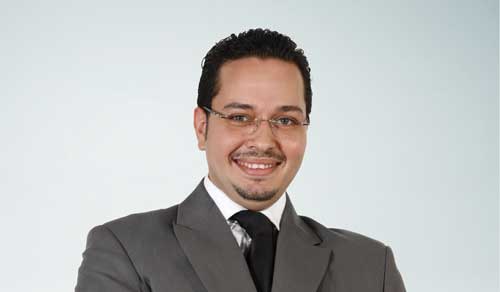Sixty years ago, a smartphone or tablet computer would have seemed a gadget out of a science fiction or James Bond movie. Since then, innovation has brought those imaginary items into reality, and innovation is very much the key to business success today.
The Afro-Asian region, consisting of all the countries in Africa, the Middle East and Asia (including India and Turkey), is a vibrant mix, with sophisticated and mature markets, developing markets, and emerging markets which until recently were more focused on microinsurance (and perhaps still are focused on this area).
Interesting and innovative ideas have been coming from many insurance lines at all points along the market’s spectrum. Here is a variety to ponder.
A simplified packaged sale
In India, an insurer has teamed with a fertilizer company to sell personal accident policies to farmers, selling policies that are actually packaged with bags of fertilizer.
Once a farmer buys the bag of fertilizer, he automatically receives a set amount of personal accident cover. The price of the fertilizer bag includes the personal accident cover premium, and there is no policy document: the fertilizer bag itself is the proof of insurance.
This simple purchase process is beneficial for a segment of the market that usually considers insurance purchases hectic and complicated. Administration as well is simple and low-cost, and coverage lasts one year and naturally aligns with the farming cycle, so that the farmer, upon buying his next bag of fertilizer, will be covered for the following year.
Insurance via convenience store
Over-the-counter insurance – that is, life insurance coverage available in boxes on convenience store shelves – is a concept that has been gaining steam around the world. In South Africa, customers can now pick a desired funeral cover plan from their local supermarket’s shelf. No underwriting is needed, the premium is paid at the cashier, and there is no complicated sales process. The consumer makes the purchase decision, and implementation could not be simpler or more convenient.
Critical illness
Critical illness insurance permits an insured to receive lump-sum payment if he or she is diagnosed with a critical illness covered by the policy. A standard, traditional plan pays a maximum of one claim, and then the policy expires. However, critical illnesses are not always terminal, and individuals could have more than one in their lifetimes.
Two recent innovations for this need are:
Staged trauma:
Improvements in medical knowledge, from diagnos-tics to treatment modalities, have increased survival ratios for critical illnesses such as cancer, especially if identified early.
Staged trauma, also known as early-stage critical illness (ESCI), pays staged benefits based on the severity of the covered illness.
ESCI pays lower benefit amounts upon claims for less severe critical illnesses, or for earlier stages of covered conditions. Premiums can be lower than those for standard CI products.
ESCI was first launched as a top-up product in Hong Kong, Singapore, Malaysia and Indonesia, using simplified/guaranteed issue for clients who had recently been fully underwritten for life, critical illness or health insurance.
Multi-pay trauma:
Multi-pay trauma is a critical illness policy that will pay an insured more than once, for multiple critical illness claims, over the course of the insured’s lifetime. As a 2008 article in the professional medical journal The Oncologist stated: “recent data suggest that women with early breast cancer are more likely to die of heart disease that recurrent cancer.” Multi-pay trauma covers such occurrences.
Multi-pay combines all defined trauma conditions into groups, each of which can be structured to contain:
• linked impairments
• linked organ systems
• impairments with similar causes
Policyholders can only claim once from each condi-tion group at 100% of the face amount. However, some products can be structured to pay out more than once for the same condition (for example, cancer).
Matching the need: dowry/wedding planning
A large French bancassurer was selling savings products in Egypt. Sales fell short of expectations, so the bank interviewed a sampling of local clients, asking them what was important, what really worried them, and what their needs or discomforts were.
The top item for this market turned out to be dowry and wedding expenses. Clients were worried they might not have enough money for a dowry and/or for a wedding because of increases in the cost of living and other factors that may affect savings.
A savings plan specifically for dowries and weddings was designed for the banks to sell to their clients. A certain amount of money would be saved, and if not used, would provide a lump sum when the child reaches age 25.
In case of the death or total permanent disability of the parents, the premium would be waived, and the same lump-sum payment as planned comes to the child at age 25. The savings plan also provides free temporary accidental coverage from the date of application until the policy is actually issued.
With this new product, bancassurance sales skyrocketed.
Innovative advertising
Most life insurance agents prefer to avoid the words ‘death’ or ‘disability’ in their sales pitches, preferring instead to say ‘any unforeseen event,’ as mentioning those “d” words could offend or upset prospective clients.
Frank.net, a direct life insurance company in South Africa that began in late 2010, sought a different and more direct approach, designing an innovative slogan and advertising campaign that confronted death and disability frankly and directly.
The slogan? “YOU DIE, WE PAY”. Simple, direct and award-winning. The radio commercials won a Loerie Gold award (South Africa’s advertising and communication excellence awards) in 2011.
Mobile technology
In some less-developed markets, not everyone has a bank account or credit card. However, virtually everyone today has a mobile phone, and these phones are being increasingly leveraged for insurance sales and needs.
A life insurance company in Ghana partnered with one of the largest cellular operators in Africa to create a successful initiative to penetrate low-income popula-tions in countries on the African continent by creating life insurance that can be sold via mobile phone.
The product reduced the cost of insurance by charging very low premiums, which are deducted from a user’s mobile wallet, with SMS confirmation. The mobile phone can also be used to submit claims and queries.
ATM technology
How many times does the average adult use an ATM? Every few days? Once a day? Once a week? No matter how often, if you are an adult with a bank account, you use an ATM.
A Turkish insurer recently used this knowledge, along with intelligent market segmentation and customer profiling, to design simplified insurance coverage that could be sold exclusively through ATMs.
At the ATM, a pop-up screen appears when a bank client withdraws funds, marketing the low sum insured products. If the user is interested, the coverage can be issued in just two steps, with no underwriting needed.
Leverageability
Although some of these ideas cannot be applied in other markets, they might spark the sort of creative thinking that can steer your company toward innovation.
Today innovation is necessary if an insurance company wants to be successful. Because of their many client partnerships, reinsurers are knowledgeable about the most innovative activities in multiple markets. Partnering with the right client-focused reinsurer can help your company come up with high-profile and innovative products, tailored for your market and its needs, using simplified underwriting, enhanced lead generation and distribution, creative advertising and marketing, and effective leveraging of technology.



